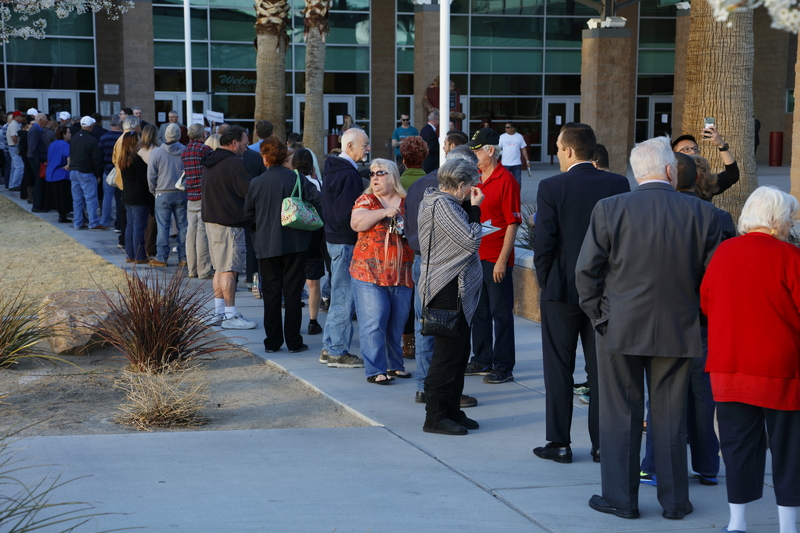
By Morgan Thomas, Policy Associate
Caucuses are rarely a topic of everyday conversation; however, they play an essential role in shaping the American government. The American use of the term “caucus” was first used in 18th century Boston to refer to a political club. Over time, the term evolved, referring to two distinct forms of political organization – party caucuses and legislative caucuses. These forms are distinct in membership and purpose. However, both allow Americans to come together around common political objectives.
The first – party caucuses – originated in the 1800s and provides voters with an opportunity to gather with members of their political party and nominate a candidate for participation in an upcoming election. Prior to the advent of nominating caucuses, presidential and vice-presidential candidates were selected by a caucus of a party’s members in Congress, without the input of voters.
The second – legislative caucuses – provide elected representatives with an opportunity to meet others with shared policy interests and objectives. Proven to be an effective means by which legislators can spur action around a given policy issue, legislative caucuses grew significantly in popularity since their inception in the early 1800s.
What is a Party Caucus?
Party caucuses are private meetings run by state political parties to vote on potential candidates for an upcoming election. Private meetings are often held in places such as schools, community buildings or churches. Unlike legislative caucuses, party caucuses involve the direct participation of voters. As such, the term “party caucus” often stands alone as just “caucus” when referred to online or in news media.
Caucuses may be used to select candidates in both federal and state elections — most notably the presidential election. They can be held at the county, district or precinct level to measure voter preference for a given candidate. For example, Colorado holds precinct caucuses to elect precinct committee persons and delegates to county assemblies.
At each caucus meeting, a candidate aims to secure the support of registered voters through speeches and discussions, sometimes causing caucus meetings to last for hours. Meetings culminate in a vote where participants show their support for a given candidate by either raising their hand or by breaking into groups that correspond with the candidate of their choice. Unlike voting in an election, these methods allow voters to express their preference for a candidate physically.
Presidential Caucuses and the National Convention
In presidential elections, caucuses do not directly elect a candidate, but rather determine the number of state delegates pledged to vote for a given candidate at the party’s national convention. Delegates are party members who pledge to represent their state’s selected candidates and presidential nominee at the national convention. They are selected based on their position within a party or by contests within a caucus or primary.
State caucuses are traditionally held from January to June of each election year. During this time, candidates travel around the country to caucus meetings in order to secure enough delegates to qualify for their party’s national convention. The candidate with the most delegates voting in their favor wins the party’s nomination. Typically, an official announcement of the candidate’s running mate follows, and they begin campaigning to win the support of the general population.
Closed and Open Caucuses
In the United States, there are two types of party caucuses which differ in terms of whether non-party affiliated voters can participate. Most often, only registered voters can participate in a caucus and they are limited to the caucus of their affiliated party. This type of caucus is a closed caucus.
Although closed caucuses are most common, some states require caucuses to be open. In an open caucus, people can vote for a candidate belonging to any political party regardless of their registered party affiliation. Similarly, delegates are not obligated to vote for a specific party in an open caucus. The Democratic Party refers to these delegates as unpledged or superdelegates and the Republican Party refers to them as unbound delegates. There are also semi-open and semi-closed caucuses which combine elements of both open and closed caucuses.
Caucuses vs. Primaries
Primary procedures can vary from state to state, city to city and even among parties. Primaries differ in who can participate, whereas caucuses are typically only for registered voters of a specific party.
Similar to a regular election, in a primary citizens vote for their preferred candidate at a designated polling place. Who is eligible to vote in a primary depends on the different types of primaries the state uses, including closed, open, semi-closed, semi-open, mixed, and nonpartisan top two or nonpartisan top four.
State caucuses have been around longer than primaries and used to be the favored method of determining presidential nominees. However, in recent years primaries have become more prevalent as people have begun to favor the similarity of primaries to an actual election and the increased opportunities for nonpartisan voters.
Some states hold a mixture of primaries and caucuses. For example, prior to 2016 Texas used a hybrid system, known colloquially as the “Texas Two-Step,” where voters participated in a closed presidential primary election to cast their ballot. The results of those primaries were then used to allocate delegates for caucuses.
Today, nine states and four territories hold presidential caucuses — Idaho, Iowa, Hawaii, Michigan, Missouri, Nevada, North Dakota, Utah, Wyoming, American Samoa, Guam, Northern Mariana Islands and the Virgin Islands. In 2024, Nevada will hold its first Democratic presidential primaries, making it the most recent state to transition from holding caucuses to holding primaries in presidential elections.
Case Study – The Iowa Caucus
Since 1983, Iowa has been the first state to hold its caucus during election years, making Iowa the “first in the nation.” Traditionally, states hold their caucuses or primaries between late February and mid-May, approximately one month before the national nominating convention. However, the Iowa caucuses are held between January and early February. In doing so, Iowa has historically been seen as an indicator of a candidate’s strength. Candidates have strategically prioritized Iowa to fuel their campaign and gain momentum before the first Presidential primaries in New Hampshire.
What is a Legislative Caucus?
Rather than centering around candidates and elections, legislative caucuses focus on the specific interests of legislators. Through legislative caucuses, policymakers with common interests or goals come together to advocate for or influence legislation surrounding these goals and collaborate on various issues. They can be partisan, bipartisan or even multipartisan. Typically, the Republican and Democratic Caucuses — at both the state and national levels — are the largest and most well-known.
Congressional Caucuses
The most well-known legislative caucuses are congressional caucuses, which consist of members of the U.S. House of Representatives and the U.S. Senate. Congressional caucuses are sometimes referred to as conferences, coalitions, task forces or working groups and traditionally fall under three classifications: ideological, national constituency and interest groups.
- Ideological Caucuses: Ideological caucuses are centered around shared ideology, usually within a party. This ideology incorporates a wide spectrum of beliefs, while still falling under a shared “umbrella.” Examples of ideological caucuses include the Blue Dog Coalition, the Congressional Progressive Caucus, the Tuesday Group and the Freedom Caucus.
- National Constituency: National constituency caucuses advocate for the shared interests of specific constituency groups, allowing members of Congress to address the needs of their respective communities. Unlike ideological caucuses, national constituency caucuses are often bipartisan. Examples of national constituency caucuses include the Congressional Black Caucus and the Congressional Hispanic Caucus.
- Interest Group: Interest group caucuses consist of members of Congress who have shared interests surrounding a specific policy issue. Interest group caucuses are bipartisan in nature and create space for cross-party dialogue on issues at hand. Examples of interest group caucuses include the Congressional Cyber Security Caucus, the Rare Disease Caucus and the Congressional Dairy Farmer Caucus.
Legislative caucuses are also common within and across state legislatures. For example, The National Black Caucus of State Legislators seeks to addresses issues affecting African Americans and other marginalized communities through research, education and advocacy. Issues in focus include financial security and safer school environments. In California, the California Legislative LGBTQ Caucus gathers legislators from across the state to discuss issues that affect LGBTQ Californians, such as marriage equality, mental health and access to health care.
Although state and legislative caucuses differ in composition, they both function as a voice for the people. State caucuses provide a path for voters with shared values to freely engage in public discussion and physically show their support for their preferred candidate. In a similar way, legislative caucuses create a space for policymakers to gather and discuss mutual interests to better serve their constituents.





